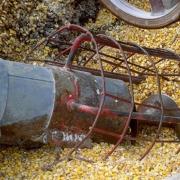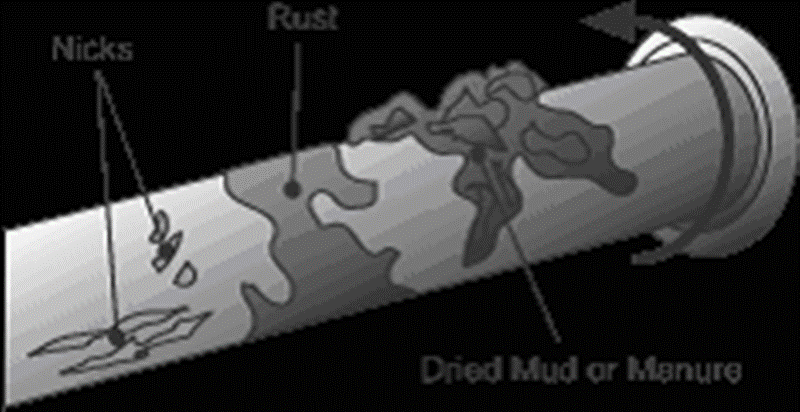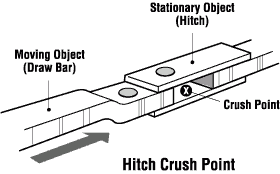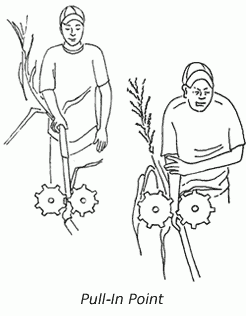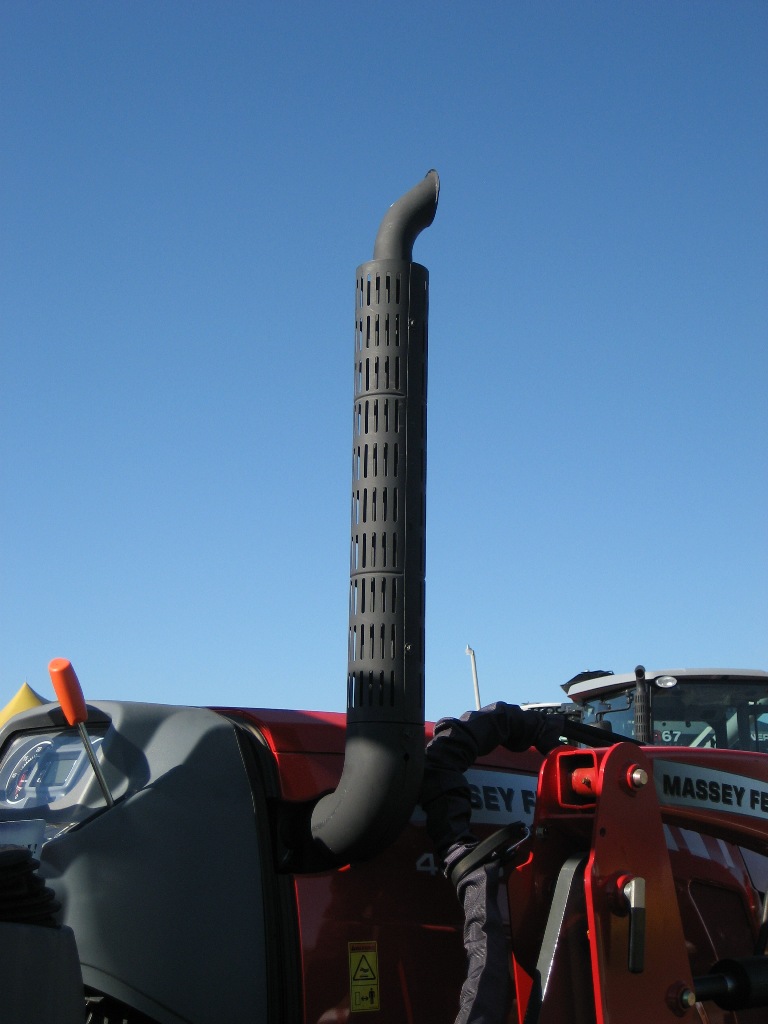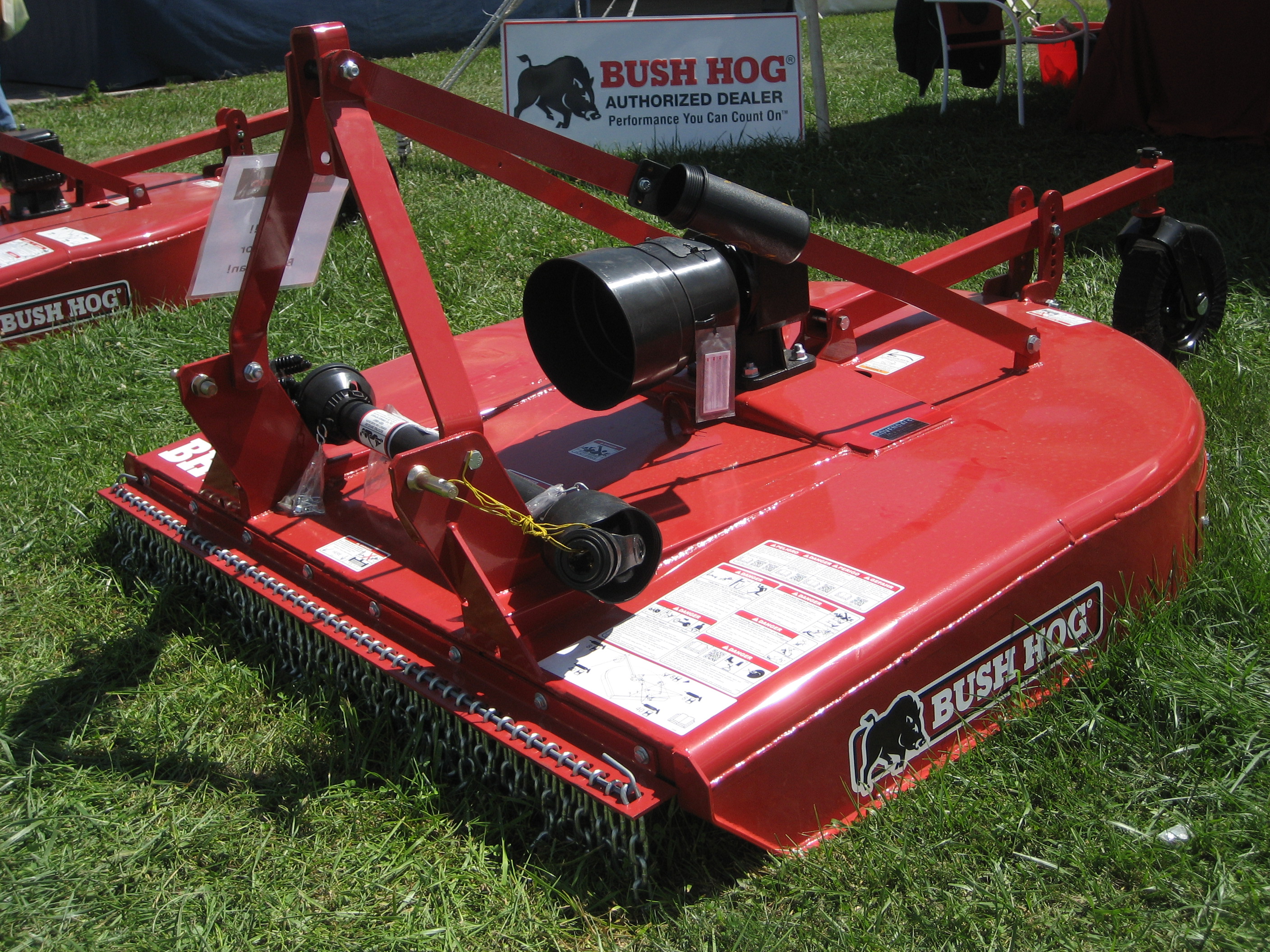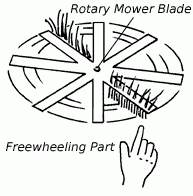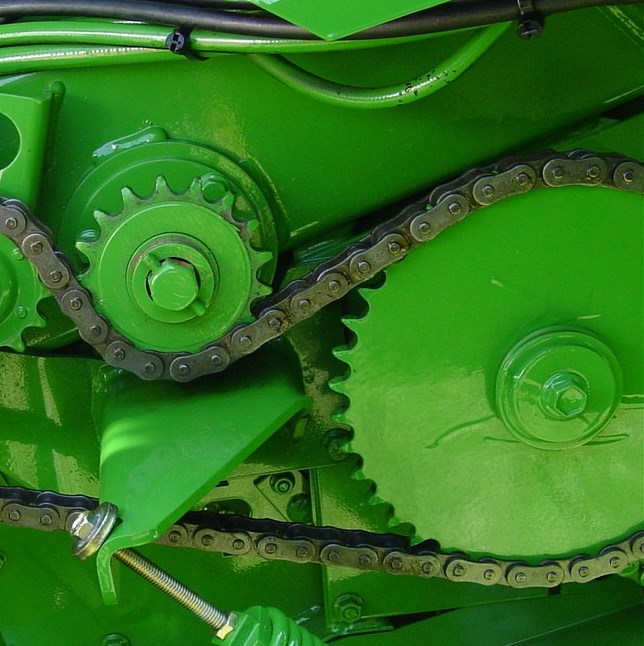
(Source: Penn State Ag Safety and Health)
Use the following format to cite this article:
Mechanical hazards: Pinch points. (2013). Farm and Ranch eXtension in Safety and Health (FReSH) Community of Practice. Retrieved from http://www.extension.org/pages/68327/mechanical-hazards:-pinch-points.
A pinch point is an area where two or more rotating parts move together with at least one part moving in a circle. These rotating parts may move at high rates of speed, making it difficult for an individual to pull free once caught. Injuries can occur when a person touches a belt or chain, tries to clear debris from drive wheels, or falls into or brushes against a belt or pinch point, or when loose clothing becomes entangled, drawing fingers, hands, and feet into a pinch point.
Examples of pinch points on farms and ranches include the following:
- Chain drives
- Feed rollers
- Gears
- Sprockets
- Belt drives
- Pulley drives
- Conveyors
Potential Injuries
The types of injuries that can be sustained when working around pinch points include the following:
- Amputations
- Lacerations
- Contusions
- Crushing of tissues or bones
- Broken bones
Safety Precautions
Listed below are ways that you can reduce your risk of a pinch point incident:
- Identify machines that might have pinch points.
- Make sure all shields are securely in place to cover pinch point areas. Replace heavily worn or broken shields.
- Watch your footing and move slowly around pinch point areas.
- Wear clothing that fits well because close-fitting clothing is less likely to be pulled into moving parts.
- Remove any jewelry, tie or secure long hair under a hat, and remove drawstrings on hoods or jackets when working around pinch point areas.
- Turn off the machine and wait for any rotating parts to come to a complete stop before beginning any type of maintenance.
- If a shield is removed to complete maintenance, make sure the shield is securely in place prior to operating the equipment.
- Place and maintain warning labels near pinch point hazards.
Resources
Click here to view a video about pinch point hazards from the Pennsylvania State University’s Agricultural Safety and Health Program.
Use the following format to cite this article:
Mechanical hazards: Pinch points. (2013). Farm and Ranch eXtension in Safety and Health (FReSH) Community of Practice. Retrieved from http://www.extension.org/pages/68327/mechanical-hazards:-pinch-points.
Sources
Agricultural equipment and machine hazards. (2016). The Ohio State University. Retrieved from http://agsafety.osu.edu/programs/cfaes-osha/ag-equipment-machine-hazards.
American Society of Agricultural and Biological Engineers (ASABE), 2008. ANSI/ASAE S493.1. Guarding for agricultural equipment. St. Joseph, MI. Retrieved from http://elibrary.asabe.org.
Harshman, W., Yoder, A., Hilton, J., & Murphy, D. (2011) Mechanical hazards. HOSTA Task Sheet 3.1. Pennsylvania State University Agricultural and Biological Engineering Department. Retrieved from http://articles.extension.org/sites/default/files/Version%203.%20January….
Safety note #22: Pinch point hazards. (2004) University of California Agriculture and Natural Resources Environmental Health and Safety. Retrieved from http://safety.ucanr.org/files/1413.pdf.

